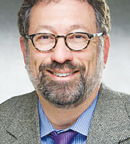
Greta Massetti, PhD
The National Cancer Policy Forum of the National Academies of Sciences took up the issue of lung cancer screening at its mid-June workshop. Greta Massetti, PhD, Associate Director for Science, Division of Cancer Prevention and Control, Centers for Disease Control and Prevention (CDC), and chair of the workshop planning committee, reminded the audience that lung cancer is the leading cause of cancer deaths in the United States—and the second-leading cause of all deaths, after cardiovascular disease. “There are 210,000 new cases each year and more than 160,000 deaths. Cigarette smoking causes 87% of those deaths,” she declared.
Even worse, lung cancer is diagnosed at a distant stage more often than other major types of cancer, and survival for even locally advanced disease is low. At diagnosis, approximately 16% of lung cancers are localized (with a 55% 5-year survival rate), 22% are regional (28%, 5-year survival), 57% are distant (4.3%, 5-year survival), and 5% are unstaged (7.4%, 5-year survival).
The U.S. Preventive Services Task Force (USPSTF) recommends annual screening for lung cancer with low-dose computed tomography (CT) for high-risk individuals, defined as 55 to 80 years old with a history of heavy smoking (30 pack-years; a pack-year is 1 pack per day for 1 year) and/or who are current smokers or who have quit within the past 15 years. Screening should be discontinued once a person has not smoked for 15 years or develops a health problem that substantially limits life expectancy or the ability or willingness to have curative lung surgery.
Evidence, Policy, and Practice

Barnett Kramer, MD, MPH
There are benefits and harms in lung cancer screening. Barnett Kramer, MD, MPH, Director, National Cancer Institute Division of Cancer Prevention, discussed the results of the National Lung Screening Trial (NLST).1-4 A total of 53,454 current and former smokers were randomly assigned to screening with low-dose CT or chest x-ray once a year for 3 years.
After an average of 6.5 years, 18 of 1,000 people who had received low-dose CT died of lung cancer vs 21 of 1,000 who had had a chest x-ray—a difference of 3. For death from all causes, there were 70 of 1,000 in the low-dose CT group vs 75 of 1,000 in the x-ray group. Low-dose CT resulted in a 20% reduction in lung cancer mortality and a 6.7% reduction in all-cause mortality.
In regard to potential risks associated with screening, false-positive results carry a risk of unnecessary diagnostic testing, radiation, and overdiagnosis. In the low-dose CT group, there were 365 false-positive results vs 142 in the x-ray group. There were 25 of 1,000 invasive procedures (bronchoscopy, biopsy, or surgery) after low-dose CT vs 7 of 1,000 after x-ray. A total of 3 of 1,000 had a major complication from an invasive procedure after low-dose CT vs 1 after x-ray.
Dr. Kramer raised several questions discussed in the session:
- Does the balance of benefits and harms of lung cancer screening with low-dose CT differ in the community compared with the controlled trial setting?
- What are the implications of clinicians deciding not to offer screening because of concerns about potential harm?

Michael L. LeFevre, MD
Michael L. LeFevre, MD, Professor and Vice Chair, Future of Family Medicine, Department of Family and Community Medicine, University of Missouri, said that the ultimate goal of screening for any disease is to reduce morbidity and mortality. To achieve that goal, one must first identify people at risk, screen them, count the incidence of early detection of the target disease, treat the person, note the intermediate outcome, and then eventually count those who died of the disease.
Dr. LeFevre said: “Per 1,000 individuals, 17 will die of lung cancer over an average of 6.5 years. With three annual screens, three or four of those deaths can be averted. But, in a first round of screening of 1,000 people, there will be 250 positives, 96% of which will be false. After 3 annual screens, the number of people with a positive screen rises to 390.”

Lung cancer screening offers the largest opportunity to improve outcomes for lung cancer patients in a generation.— Douglas E. Wood, MD
Tweet this quote
Douglas E. Wood, MD, Professor and Interim Chair, Division of Cardiothoracic Surgery, University of Washington, who chairs the National Comprehensive Cancer Network (NCCN) Guideline Panel on lung cancer screening, said: “Prior to the major result of the randomized NLST trial, the NCCN did not recommend the routine use of screening CT as standard clinical practice. However, in October 2011, NCCN published the first modern lung cancer screening guidelines after the NLST and now recommends annual low-dose CT for patients at high risk of lung cancer.”
Dr. Wood noted that the NCCN Guidelines include additional risk factors beyond age and smoking history, which were the only inclusion criteria included for the NLST. “Occupational exposure, cancer history, and certain other lung diseases independently increase risk for lung cancer as well,” he explained. “These factors are included in the NCCN Guidelines to offer screening to patients who may be considered to have a similar risk of lung cancer as those in the NLST.”
The NCCN Guidelines also provide algorithms for management of screen-detected lung nodules that have been recently harmonized with the Lung Imaging Reporting and Data System (Lung-RADS™) standardized reporting and management tool developed by the American College of Radiology. “The implementation of lung cancer screening offers an enormous opportunity to address health-care disparities in the United States,” Dr. Wood stated. “Lung cancer patients are older, have a lower socioeconomic status, and have worse outcomes in certain racial minorities. Lung cancer screening offers the largest opportunity to improve outcomes for lung cancer patients in a generation.”
CMS Coverage
What will Medicare cover? Joseph Chin, MD, Deputy Director, Centers for Medicare & Medicaid Services (CMS) Coverage and Analysis Group, said that CMS covers preventive services if they are reasonable and necessary, recommended with a grade of A or B by the USPSTF (in this case, it’s a B), and are individually appropriate.
CMS will reimburse for low-dose CT lung cancer screening if the following criteria are met: age between 55 and 77 years and asymptomatic; smoking history of at least 30 pack-years, a current smoker, or someone who has quit within the past 15 years; prescreening counseling with shared decision-making; and requirements in training, supervision, experience, and continued medical education for the radiologist reading the CT.
The required counseling and shared decision-making visit must include the benefits and harms of screening, follow-up testing, overdiagnosis, false-positive rate, and total radiation exposure. The patient must also be told about the importance of annual screening and the effect of comorbidities as well as be willing to undergo diagnosis and treatment. Smoking cessation also should be part of counseling.
Furthermore, under the Affordable Care Act, all privately insured patients who meet USPSTF eligibility have coverage for low-dose CT screening for lung cancer as a preventive health benefit (ie, without a copay). The same is true for Medicare beneficiaries; there is no co-pay for patients eligible for lung cancer screening.
Primary Care Perspective

If we apply risk calculators to identify nodules most likely to be malignant [appearance and size of the nodule, patient age, gender, and family history], we could have much better discrimination.— Richard Hoffman, MD, MPH
Tweet this quote
How can primary care physicians convince their patients to be screened—and should they? Richard Hoffman, MD, MPH, Professor of Internal Medicine and Epidemiology, University of Iowa Carver College of Medicine, is not so positive. “Not only is the absolute benefit from lung cancer screening very small, there is a high rate of false-positives, as well as significant concerns about being able to safely and effectively translate the NLST results into community practice.”
Are primary care practitioners even aware of the NLST results? Not so much. Dr. Hoffman reported there was only limited awareness in New Mexico, and physicians there believed the absolute mortality benefit was small. In South Carolina, 41% believed that low-dose CT reduced lung cancer mortality, and 76% thought the benefits outweighed the risks. In North Carolina, 42% of physicians rated screening as effective in reducing lung cancer mortality (but erroneously thought it is less effective than screening for breast and colorectal cancers).
Dr. Hoffman reported that 49% to 86% of primary physicians are aware of the USPSTF guidelines. Those with the highest awareness recognized that guidelines targeted heavy current or former smokers and not those with just exposure to second-hand smoke. Those with the lowest awareness knew little about the criteria, and some believed that chest x-ray, not low-dose CT, was the way to go.
Dr. Hoffman said that although the false-positive rate is high, applying Lung-RADS could reduce the rate by 50% to 75%. “If we apply risk calculators to identify nodules most likely to be malignant [appearance and size of the nodule, patient age, gender, and family history], we could further reduce the risks of unnecessary diagnostic procedures.”
Lung-RADS Categories

There is a great deal of concern about testing, radiation exposure, patient anxiety, follow-up invasive procedures, and cost. Lung-RADS can provide standardized reporting and management, and it can facilitate outcomes tracking.— Ella Kazerooni, MD
Tweet this quote
Why Lung-RADS? asked Ella Kazerooni, MD, Professor of Radiology, University of Michigan. Because of the lack of clarity about how to manage positive screens, she said. “There is a great deal of concern about testing, radiation exposure, patient anxiety, follow-up invasive procedures, and cost. Lung-RADS can provide standardized reporting and management, and it can facilitate outcomes tracking.” Use of LungRADS has been shown in two published studies, including a reclassification of the NLST data, to reduce the positive screen rate from approximately 1 in 4 to approximately 1 in 10. This is accomplished by increasing the size of nodules used to define a “positive” screen and reducing the need for interim testing between annual screens for nodules that have a very low likelihood of becoming a clinically active or significant cancer. This gets at a common concern in screening, which is overdiagnosis. These cancers a person has but can live with and don’t manifest themselves clinically while a person is alive. This reduces the downstream noninvasive and invasive testing that follows a positive screen and should make lung cancer CT screening even more cost-effective than has already been demonstrated.
The system consists of the following five categories:
- Incomplete (0): The CT cannot be interpreted and must be repeated.
- Negative (1): No nodules or definitely benign nodules. This category and category 2 include 90% of people screened and carry a less than 1% probability of malignancy. The recommendation is to continue annual screening with low-dose CT.
- Benign appearance or behavior (2): These nodules have a very low likelihood of becoming a clinically active cancer due to their size or lack of growth.
- Probably benign (3): These nodules have a low likelihood of becoming clinically active cancer. Six percent of people screened fall into this category, which carries a 1% to 2% probability of malignancy. Patients here should have another low-dose CT in 6 months to re-evaluate the abnormalities for interval growth that may prompt further evaluation; if the nodules are unchanged or have resolved, patients should return to their annual screening calendar with their next screening CT in 6 months.
- Suspicious (4A, 4B): For these findings, additional diagnostic testing and/or tissue sampling is recommended. Two percent of people screened fall into each of these two categories, respectively. Category 4A has a 5% to 15% chance of malignancy, and category 4B has a greater than 15% probability. Patients in category 4A should have another low-dose CT in 3 months; a PET-CT may be considered if the solid component of the nodule is greater than 8 mm. Patients in category 4B have a greater than 15% chance of having malignancy, with further workup predicated on their individual risk of cancer, as can be evaluated using a lung cancer risk assessment tool. The subsequent testing may be a chest CT with intravenous contrast, PET-CT, and/or tissue sampling with multidisciplinary collaboration and/or referral to an appropriate specialist familiar with lung cancer diagnosis strongly encouraged.
Considerations for and Against Screening
When thinking about recommending lung cancer screening, physicians need to consider whether the harms outweigh the benefits and whether patients can understand all the ramifications and are likely to follow up, said Dr. Hoffman. Even when all these factors are taken into consideration, he added, screening discussions often fail to inform and engage. “Perhaps the presentation is unbalanced, maybe the patients have limited knowledge, and maybe their preferences are not elicited.”
When screening is not offered at all, it may be because the patient doesn’t fit the criteria; he or she is not healthy enough; or the physician isn’t convinced the benefits outweigh the harms, doesn’t know whether the patient smokes, or thinks it’s more appropriate to allocate resources to younger patients.
Dr. Hoffman noted that there are variations in the use of CT screening for lung cancer. In New Mexico, for example, some physicians ordered baseline chest x-rays for smokers but not low-dose CT. In South Carolina, 73% reported discussing low-dose CT, but only 59% referred even a single patient in the past year. Many recommended x-ray, however. In North Carolina, 21% offered chest x-ray, and only 12% offered low-dose CT. In Texas, 56% said they planned to offer screening, but only 10% had a program in their practice.
In essence, it appears that a majority of primary care doctors do not know about lung cancer screening, order inappropriate tests in an effort to screen, and have not yet incorporated guidelines for lung cancer screening into their practice. All cancer guidelines groups in the United States, Canada, and Europe have endorsed low-dose CT for lung cancer screening in the high-risk patient population.
Racial, Ethnic, Socioeconomic Disparities

Christopher S. Lathan, MD, MPH
Not everyone thinks about lung cancer screening in the same way, said Christopher S. Lathan, MD, MPH, Assistant Professor of Medicine, Harvard Medical School, and Director, Cancer Care Equity, Dana-Farber Cancer Institute. Nor does everyone experience the disease in the same way. He said that according to the American Cancer Society, between 2007 and 2011, the incidence rate for black American men was 95.4/100,000 and 81.3/100,000 for white men. The death rate was 77.5 and 63.9, respectively.
Dr. Lathan noted that, of all racial and ethnic groups in the United States, the incidence and mortality rates of lung cancer are highest among black men. The good news is that over the past 40 years, there has been a decrease in all races, although black men are still at the top of the heap when smoking habits are adjusted for. Other good news, said Dr. Lathan, is that low-dose CT decreased mortality to a greater extent for black individuals than for all other groups, even though they were younger, had more comorbidities, and were less educated.
Income plays a role as important as race, continued Dr. Lathan. “Poor people face a double jeopardy. They are at increased risk because they smoke more, and poverty increases their risk of dying. Income is directly related to the stage of disease at diagnosis, and stage drives mortality.”
Money matters in other ways, too. Dr. Lathan discussed two reports in the Journal of Clinical Oncology. The first, from October 2014, was about insurance status and patients with the 10 most deadly cancers.5 Those with non-Medicaid insurance (ie, Medicare or a private carrier) were less likely to present with distant disease (16.9%) than those with Medicaid coverage (29.1%) or with no insurance (34.7%). Patients with non-Medicaid insurance were more likely to receive cancer-directed surgery and/or radiation (79.6%) than those on Medicaid (67.9%) or those who were uninsured (62.1%). Patients covered by Medicaid (or who had no insurance) were more likely to die than those with other coverage.
The second report, from May 2016, associated financial strain with symptom burden and quality of life.6 Among patients with lung cancer, 40% reported limited financial reserves (less than 2 months). They suffered significantly more pain than patients who had financial reserves of 12 months, had greater symptom burden, and poorer quality of life.
The Health Information Trends Survey (HINTS) is a public database started in 2002 that examines changing patterns in health information and access. It reports that overall knowledge about lung cancer among all races is limited, but black individuals appear to expect more symptoms, be reluctant to seek care for fear of disease, and be confused about prevention. ■
Disclosure: Drs. Massetti, Kramer, LeFevre, Wood, Hoffman, Kazerooni, and Lathan reported no potential conflicts of interest.
References
3. Patient and Physician Guide: National Lung Screening Trial (NLST). Available at http://www.cancer.gov/types/lung/research/NLSTstudyGuidePatientsPhysicians.pdf. Accessed July 7, 2016.
Editor’s Note: For more on the issue of lung cancer screening with low-dose CT, be sure to see As Low-Dose CT Screening Moves Into the Clinic, Implementation Issues Move Up on the Agenda for a report from the Prevent Cancer Foundation’s 18th Annual Quantitative Imaging Workshop.

